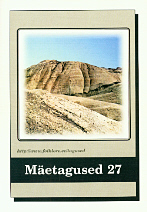Fraseoloogilistest liitnimisõnadest
On the Phraseological Compound Nouns
Author(s): Anneli BaranSubject(s): Language and Literature Studies
Published by: Eesti Kirjandusmuuseum
Summary/Abstract: The database of Estonian phrases includes a large number of nominative compound nouns. The rich compounding productivity in the Estonian language in the past and present is confirmed by the fact that the earliest 17th and 18th century Estonian grammars and dictionaries contained a large number of phraseological compound words. Compound nouns refer to objects and phenomena on the basis of their characteristic features or relation to other objects and phenomena. The use of compound constructions is a productive method for improving lexica: such substantives are formed in order to describe real objects without the actual need to derive new nouns. Characteristically of a compound noun construction, the relation between the main constituent and the complement, i.e. the full meaning, depends on the lexical meaning and the context of the same words. Most of the compound nouns are determinative: this endocentric construction includes the headword with the subordinate compound. The sc. immediate determining construct doesn't always have a specific meaning, i.e. the head word of the compound may fail to describe the general notion, where the denotative agent would belong to. Since the direct meaning has become secondary, the determinative relations between immediate constructs may be metaphoric. There are numerous individual, animal, plant and object references of this relation in phraseology. Phraseological compounds constitute a source of synonyms as they enable us to diversify lexica. The semantics of these words may be extremely complex, owing to the uneven transmitting of its components. Phraseological compound may manifest either motivated figurativeness or an ambiguous motivation. Unfamiliar and archaic components often complicate understanding, and unfortunately, the collected Estonian phrases tend to reveal very little information about them. The article analyses compound nouns from the figurative aspect, namely the semantical field of origin of the main components of phraseological compounds (other individuals, animals, or other zoological creatures, domestic paraphernalia, food, etc.). The classification is based on the relationship between the meaning of the headword and the meaning of the compound.
Journal: Mäetagused. Hüperajakiri
- Issue Year: 2004
- Issue No: 27
- Page Range: 157-166
- Page Count: 10
- Language: Estonian

